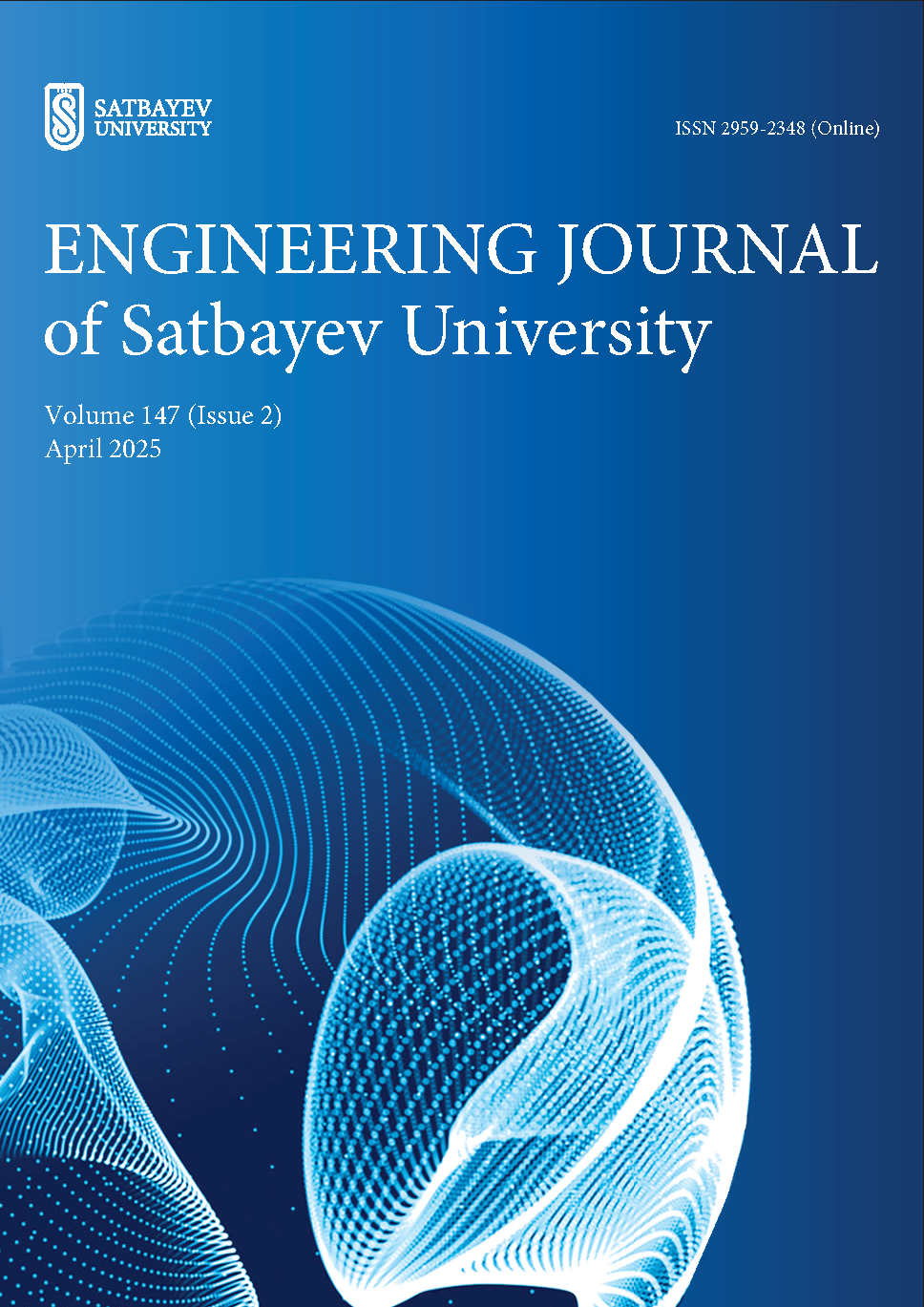Technology for producing pure lead-free zinc oxide from electric arc furnace (EAF) dust
DOI:
https://doi.org/10.51301/ejsu.2025.i2.03Keywords:
electric arc furnace dust, sintering, zinc oxide lead-free, calcium chloride, carbonaceous agentAbstract
An economical and environmentally advantageous two stages method with efficient recovery of pure lead-free zinc oxide from electric arc furnace dust in parallel with clinker containing iron and carbon production for easy return to the iron smelting furnace was described. At the first stage, the electric arc furnace dust was mixed with a mixture of chloride salts and sintered at various temperatures to lead removing. In the second stage, the clinker after the first sintering stage was mixed with carbonaceous agent and sintered again to obtain pure lead-free zinc oxide. The clinker after the second sintering stage, containing iron and carbon, can be sent to the main iron production. Laboratory-scale measurements with electric arc furnace dust from one of the Kazakhstan metallurgical ferrous plants show that process allows receive lead-free zinc oxide with the total impurity content is 0.06–0.07 mass%, and the lead content is 0.001 mass%. Based on the laboratory studies carried out, a technological scheme for the two-stage processing of electric arc dust was developed to produce marketable products. The environmental benefit of the method is to reduce emissions of harmful substances into the environment associated with the recycling of electric arc furnace dust. In addition, the process allows to recycle production waste and reduce the consumption of natural resources.
References
Kania, H. & Saternus, M. (2023). Evaluation and Current State of Primary and Secondary Zinc Production – A Review. Applied Sciences, 13(3), 2003. https://doi.org/10.3390/app13032003
Kolisnichenko, V. (2023). Kazakhstan increased steel production by 16.4% y/y in 2023. During the year, the country's steel enterprises produced 3.92 million tons of steel (Global market, Kazakhstan). Retrieved from: https://gmk.center/en/news/kazakhstan-increased-steel-production-by-16-4-y-y-in-2023/
Toporkova, Y.I., Bludova, D., Mamyachenkov, S.V. & Anisimova, O.S. (2021). A review of processing methods for electric arc furnace dust. iPolytech Journal, 25(5), 643-680. https://doi.org/10.21285/1814-3520-2021-5-643-680
Simonyan, L.M., Alpatova, A.A. & Demidova, N.V. (2019). The EAF dust chemical and phase composition research techniques. Journal of Materials Research and Technology, 8(2), 1601-1607. https://doi.org/10.1016/j.jmrt.2018.11.005
Wang, J. (2023). A Study on the Recovery of Zinc and Pig Iron from Byproducts after Steelmaking Dust Treatment. Archives of Metallurgy and Materials, 68(1), 205-208. https://doi.org/10.24425/amm.2023.141495
Grudinsky, P., Zinoveev, D., Kondratiev, A., Delitsyn, L., Kulumbegov, R., Lysenkov, A., Kozlov, P. & Dyubanov, V. (2023). Reduction Smelting of the Waelz Slag from Electric Arc Furnace Dust Processing: An Experimental Study. Crystals, 13(2), 318. https://doi.org/10.3390/cryst13020318
Xiaolong, L., Zhiwei, P., Jiaxing, Y., Zhizhong, L., Jiann-Yang, H., Yuanbo, Z., Guanghui, L. & Tao, J. (2017). Pyrometallurgical recycling of electric arc furnace dust. Journal of Cleaner Production, (149), 1079-1100. https://doi.org/10.1016/j.jclepro.2017.02.128
Chapman, C.D. & Cowx, P.M. (1991). Treatment of EAF dust by the tetronics plasma process. Steel Times, (219), 301-304.
Holtzer, M., Kmita, A. & Roczniak, A. (2015). The Recycling of Materials Containing Iron and Zinc in the OxyCup Process. Archives of foundry engineering, 15(1), 126-130.
Brožová, S., Pustějovská, P., Zbránková, M. & Havránek, J. (2018). Processes of Waste Recycling and Utilization in the Shaft Furnaces. Hutnické listy, (LXXI), 89-93.
Xiong, Y., Wang, K., Qiu, D., Omran, M., Huang, R., Li, Y., Wei, S., Khan, I.U., Zhang, D., Ahmed, A. & Yu, Y. (2023). Recent Developments on the Removal of Zinc from Electric Arc Furnace Dust by Using Microwave Heating. Preprint from Research Square, 23. https://doi.org/10.21203/rs.3.rs-2795609/v1
Omran, M., Fabritius, T. & Heikkinen, E. (2019). Selective Zinc Removal from Electric Arc Furnace (EAF) Dust by Using Microwave Heating. Journal of Sustainable Metallurgy, (5), 331-340. https://doi.org/10.1007/s40831-019-00222-0
Reiter, W., Rieger, J., Raupenstrauch, H., Cattini, L., Maystrenko, N., Kovalev, D. & Mitrofanov, A.A. (2023). Recovery of Valuable Materials with the RecoDust Process. Metals, 13(7), 1191. https://doi.org/10.3390/met13071191
Małecki, S., Gargul, K., Warzecha, M., Stradomski, G., Hutny, A., Madej, M., Dobrzynski, M., Prajsnar, R. & Krawiec, G. (2021). High-Performance Method of Recovery of Metals from EAF Dust – Processing without Solid Waste. Materials, 14(20), 6061. https://doi.org/10.3390/ma14206061
Wegscheider, S., Steinlechner, S., Pichler, C., Rösler, G. & Antrekowitsch, J. (2015). The 2sDR process – Innovative treatment of Electric Arc Furnace Dust. WASTES 2015 – Solutions, Treatments and Opportunities, 355-360. https://doi.org/10.1201/b18853-59
Popovici, V. (2009). By-Products from EAF Dust Recycling and Their Valorisation. 5th Global Slag Conference, Brussels.
Turkdogan, E.T. (1980). Physical Chemistry of High Temperature Technology. New-York: Academic Press.
Chase, M.W. (1998). NIST-JANAF thermochemical tables. American Chemical Society, New York.
Zaitsev, V.Ia. & Margulis, E.V. (1985). Metallurgy of the lead and zinc. Moscow, Metallurgy
Downloads
Published
How to Cite
Issue
Section
License
Copyright (c) 2025 Engineering Journal of Satbayev University

This work is licensed under a Creative Commons Attribution-NonCommercial-NoDerivatives 4.0 International License.
<div class="pkpfooter-son">
<a rel="license" href="http://creativecommons.org/licenses/by-nc/4.0/"><img alt="Creative Commons License" style="border-width:0" src="https://i.creativecommons.org/l/by-nc/4.0/80x15.png"></a><br>This work is licensed under a <a rel="license" href="http://creativecommons.org/licenses/by-nc/4.0/">Creative Commons Attribution-NonCommercial 4.0 International License</a>.
</div>





